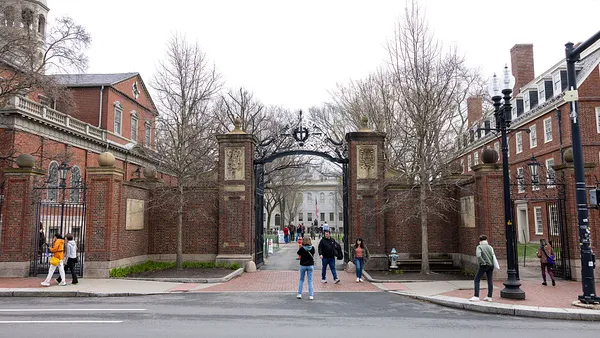Dive Brief:
- Strong management and governance policies can help colleges withstand crises that harm their reputations, infrastructure or operations, explains a new report from S&P Global Ratings.
- Among the report's sample of schools that were affected by events such as campus violence, lawsuits, protests, sexual assault scandals and natural disasters, credit ratings for most of them held steady from before their respective incidents through the year or so after.
- The report comes in light of the Varsity Blues admissions scandal, in which oversight failures "facilitated, unwittingly or wittingly, the perpetuation of the scheme" at some of the involved institutions, the authors explain.
Dive Insight:
Although man-made and natural crises affecting higher education have made headlines, they largely haven't had enough of an impact on a college's enrollment, finances or fundraising to warrant S&P changing its rating of the institution. As such, those events have left the schools with "a bruised ego" but little else in the way of long-term consequences, the authors write.
They largely attribute the size of the impact to institutions' risk-management and governance practices. These policies generally let schools move swiftly to respond to such events, said Kenneth Rodgers, director of U.S. public finance at S&P, "and in reacting quickly, they oftentimes are successful in mitigating the associated risk with these events."
An institution's financial footing and response to such a situation can also have an impact on what happens to its rating, which is a measure that impacts its ability to borrow money.
For instance, S&P's rating of Harvard University is stable despite its involvement in a high-stakes affirmative action lawsuit in which it is accused of discriminating against Asian American applicants. S&P says the situation is currently not likely to impact the school's credit rating because of its "substantial financial resources."
However, the case could reach the Supreme Court, and its decision could affect colleges and universities that don't have Harvard's "financial flexibility," the authors write.
Meanwhile, S&P downgraded Michigan State University in the aftermath of the Larry Nassar scandal, in part because it used debt to finance a $500 million settlement fund for his victims. Still, the report notes, demand and fundraising at the university "have remained strong."
S&P also views favorably the corrective actions Michigan State took in the wake of the scandal and investigations probing whether university officials knew of the abuses. (The university has also been accused of stonewalling an investigation by the state attorney general's office.)
While S&P's report refers to risk at individual schools, the impact of these crises has been far wider, Rodgers said. One way that is apparent is through rising turnover among executive leadership. Data from the American Council on Education's latest study of college presidents found their average tenure fell by two years between 2006 and 2016 to 6.5 years on the job.
Other research has tied presidents' involuntary departures to financial impropriety and dissatisfaction from the campus community, among other factors.
Rodgers notes that growing concerns about reputational risk across higher ed could make it more difficult to attract board members or new presidents, and could delay fundraising campaigns that have been in the works. Federal regulators and state lawmakers have also shown more interest in adding oversight of the sector.
"The industry is probably not that accustomed to having that type of spotlight on it," he said.














